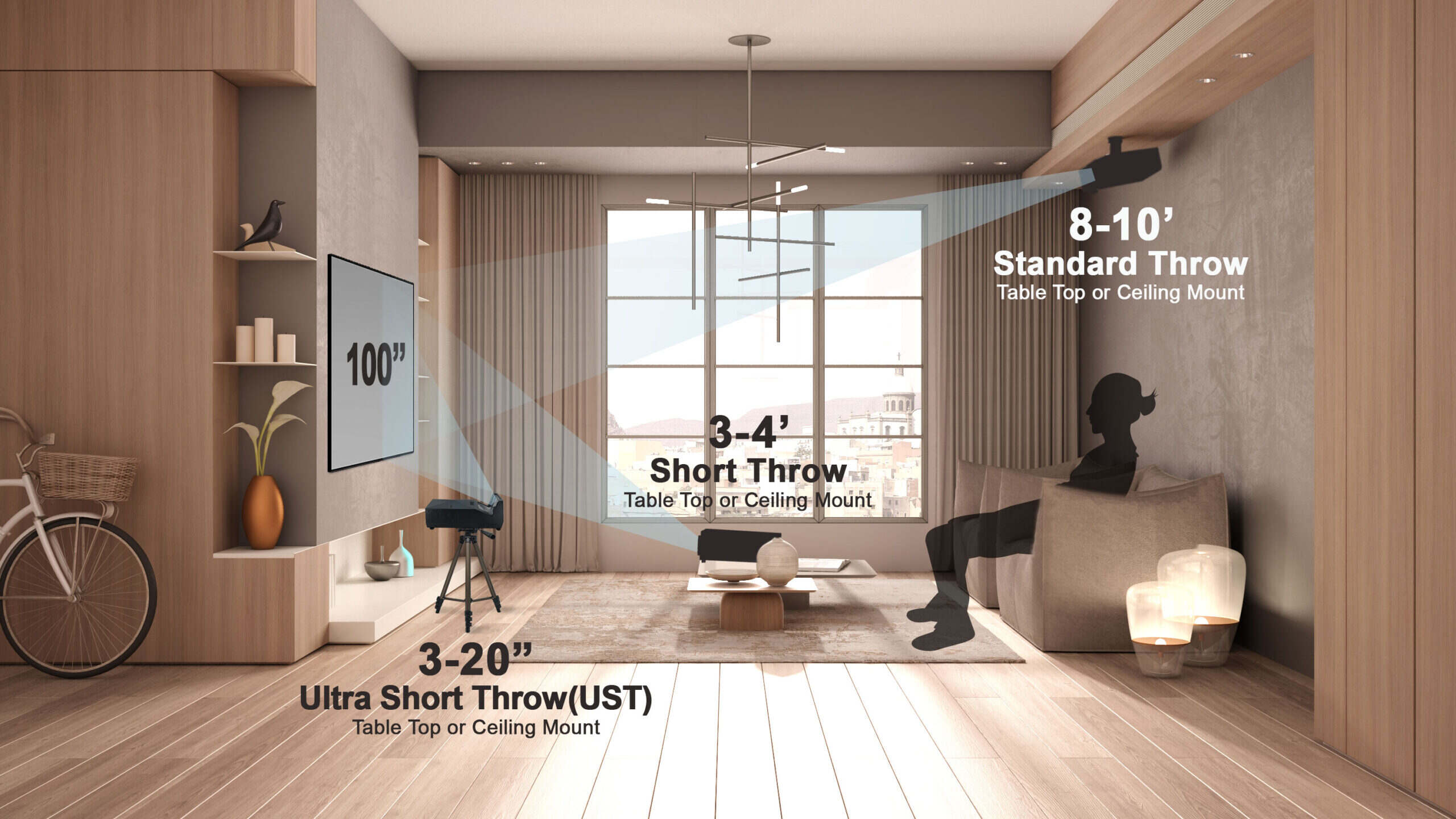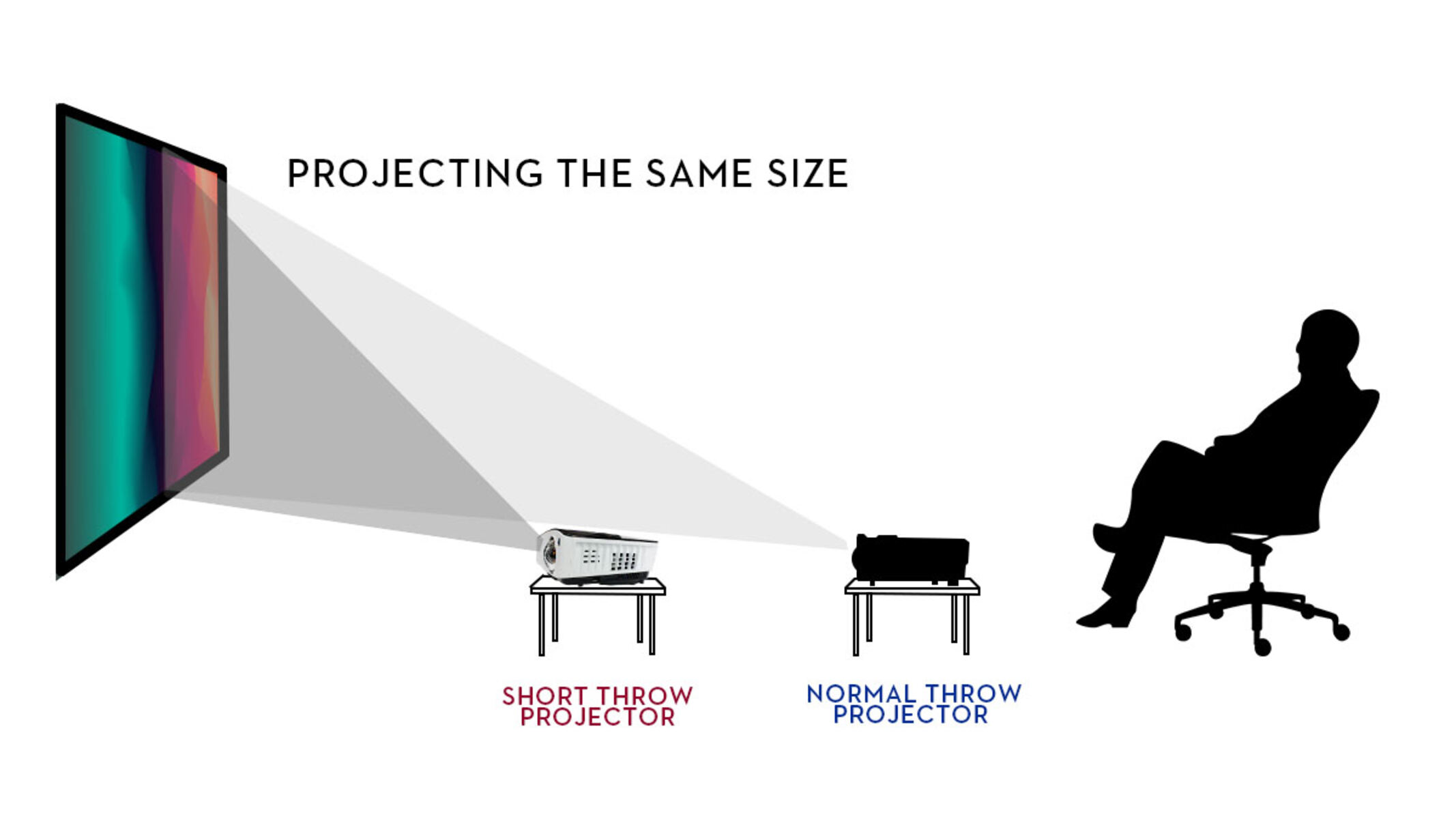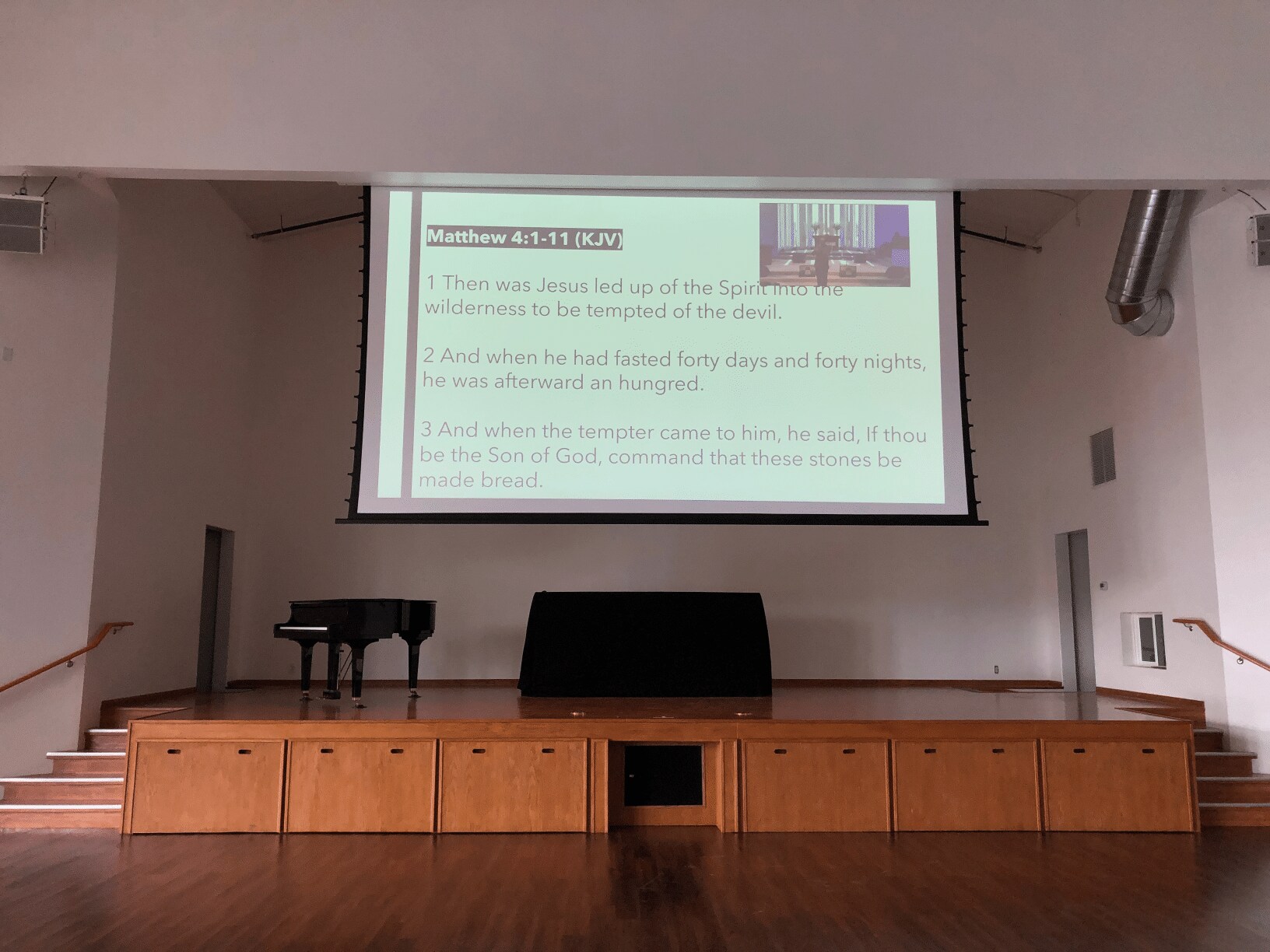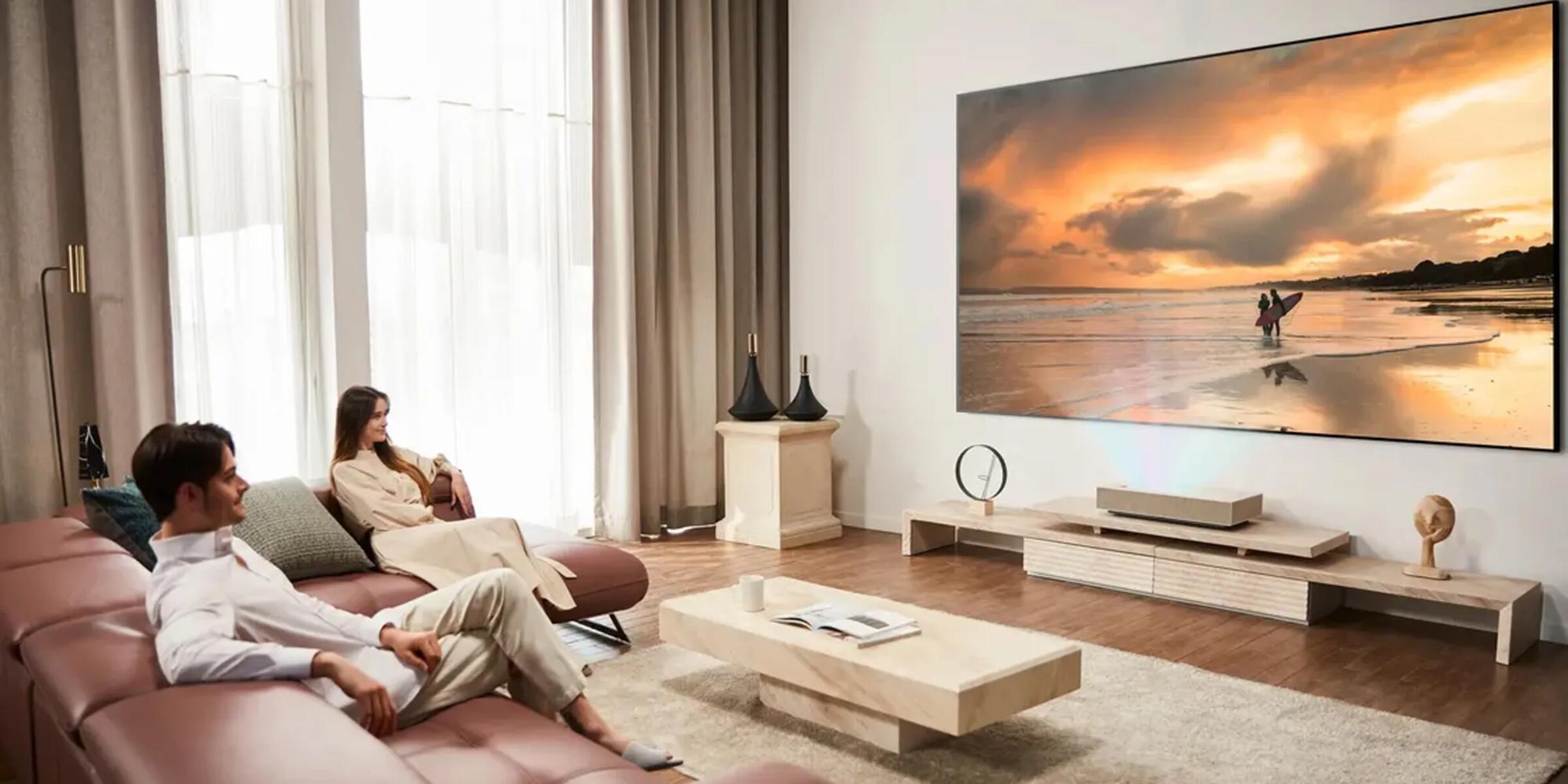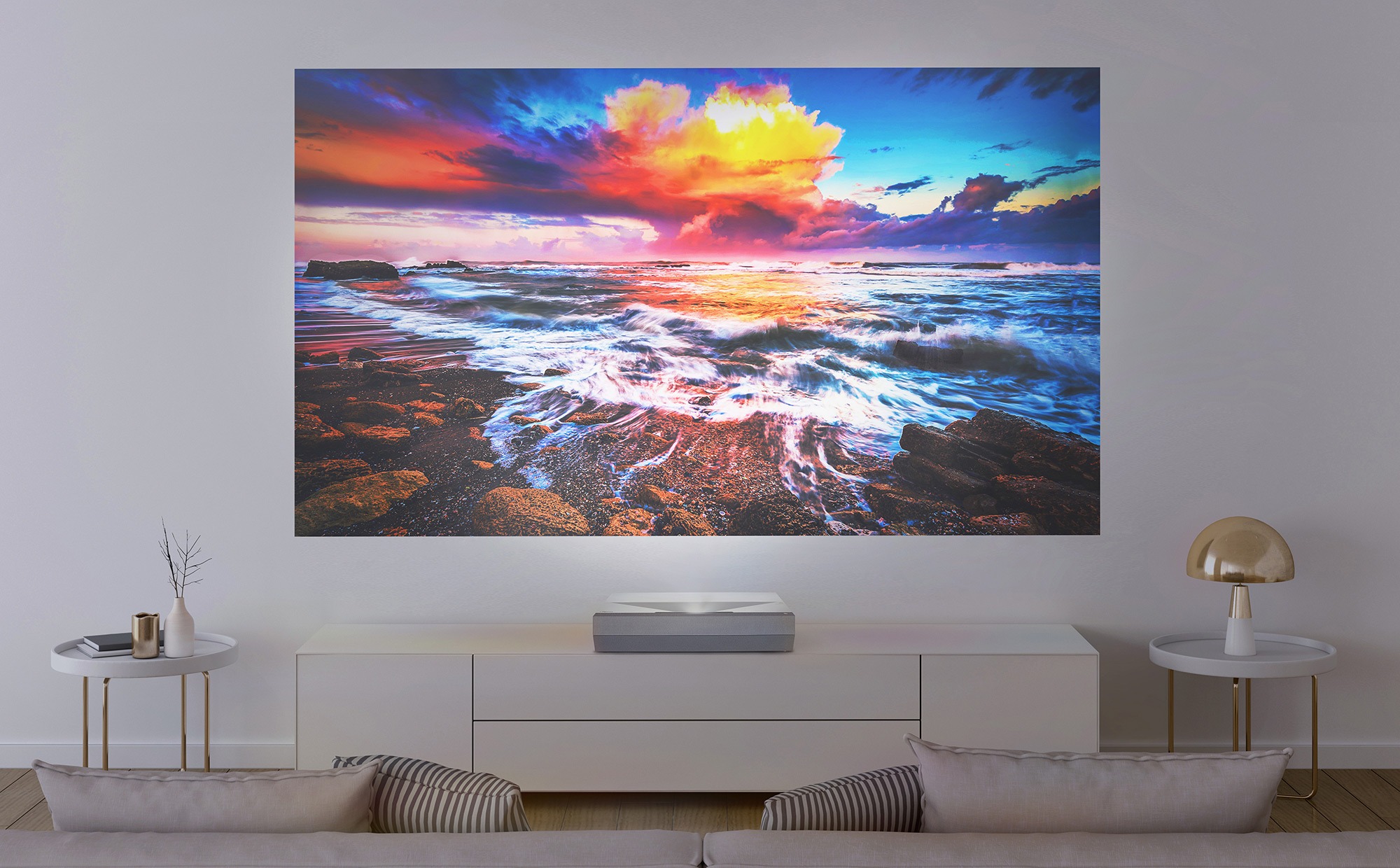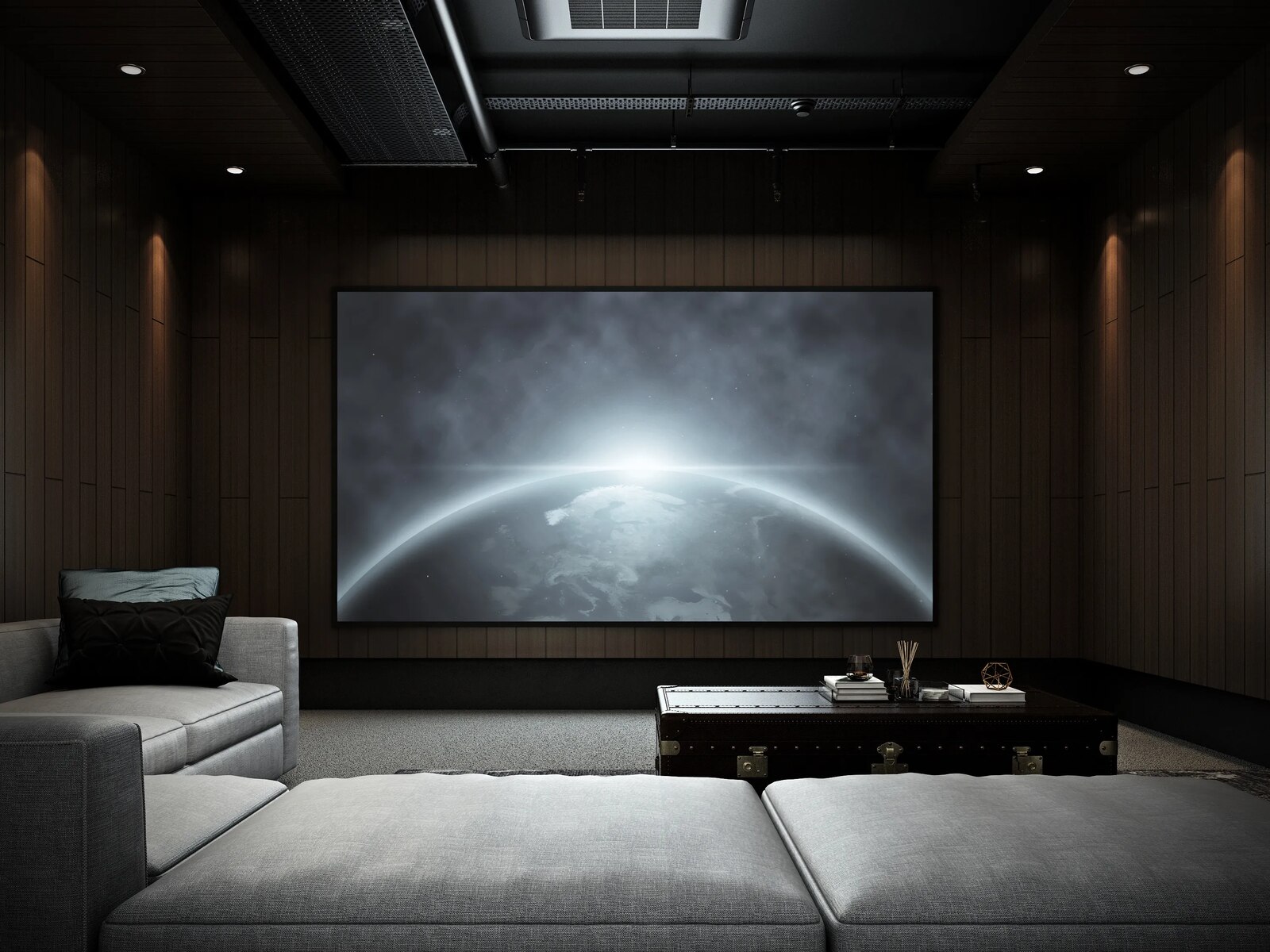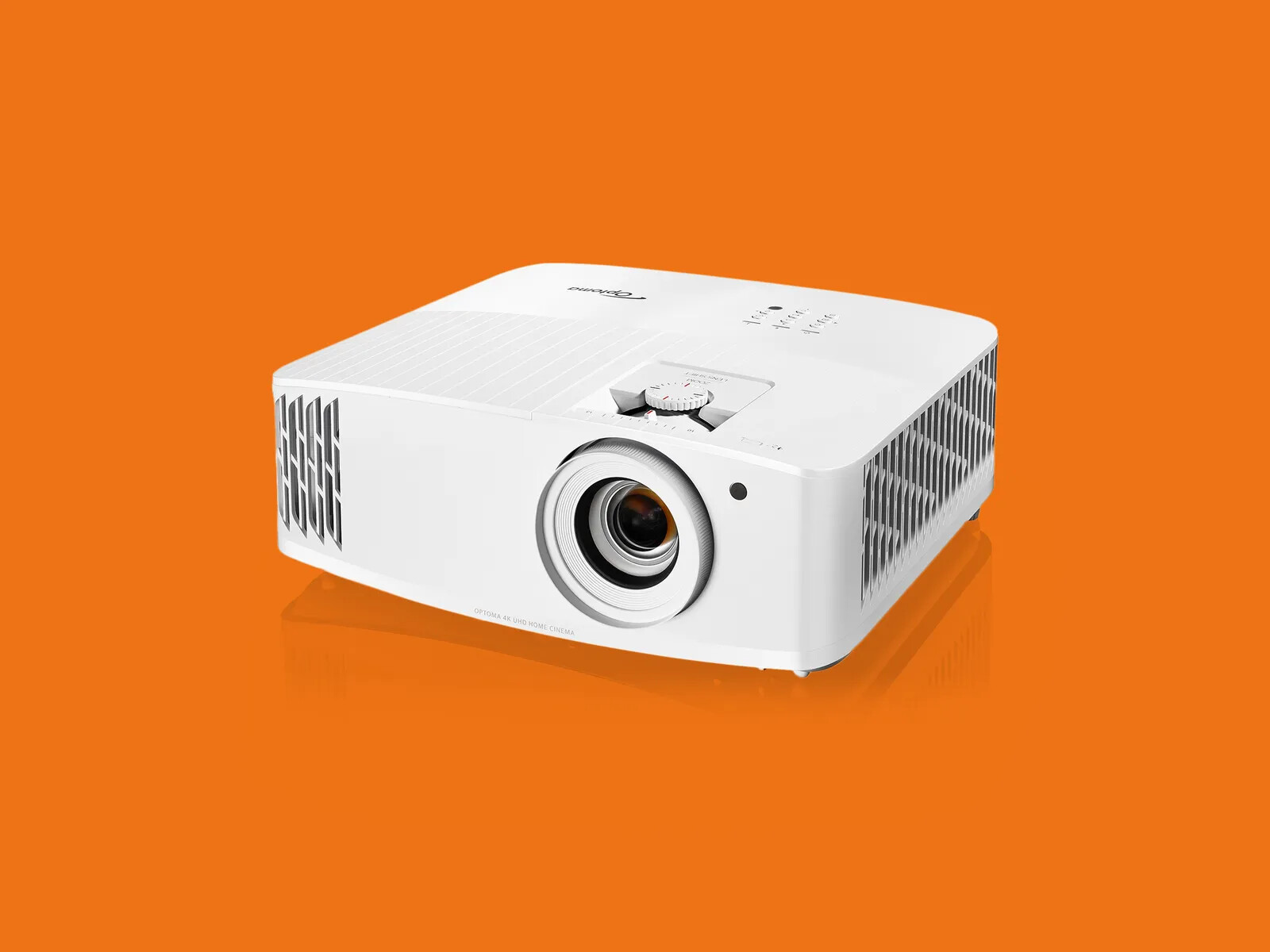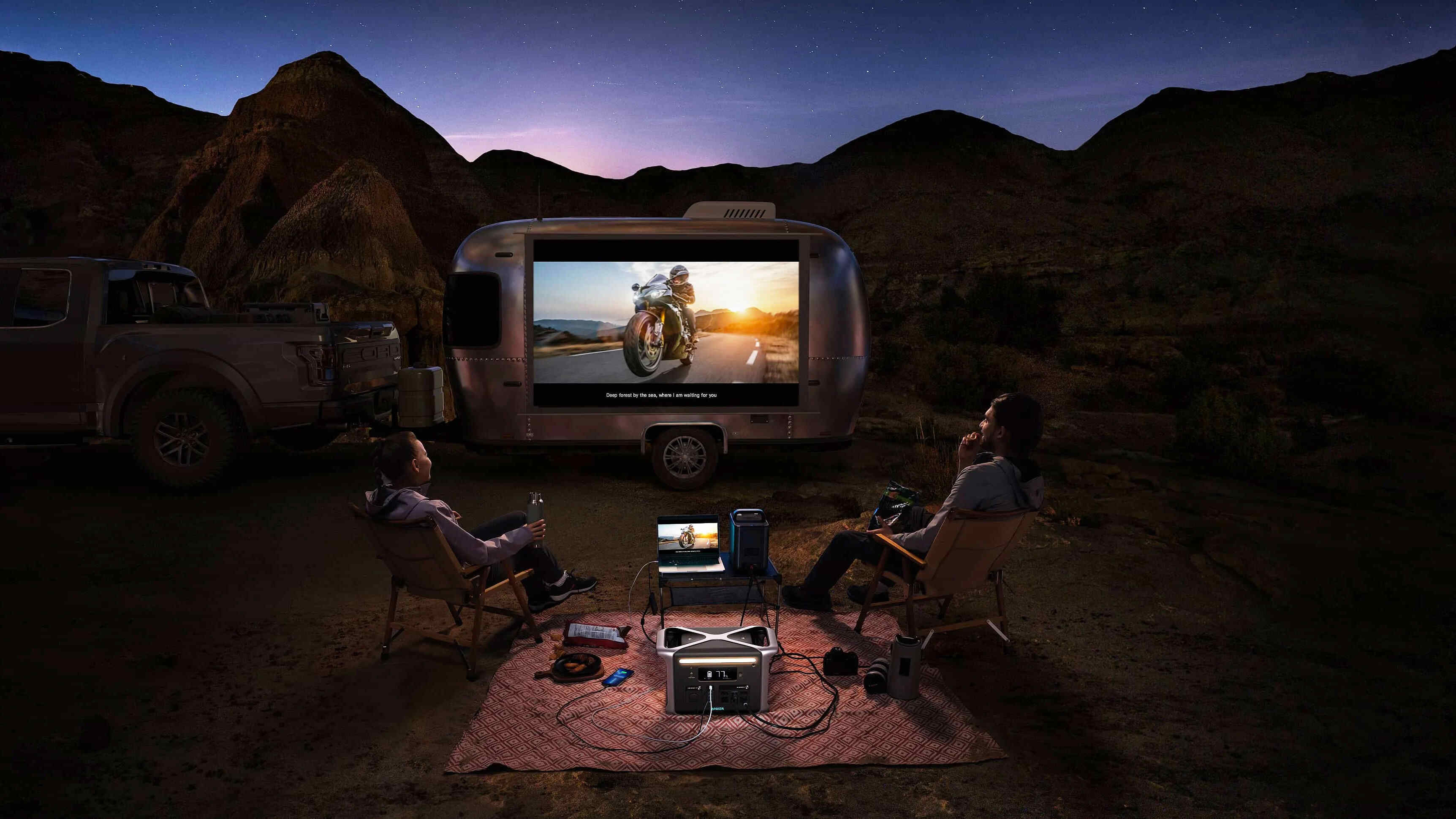Introduction
Welcome to our guide on understanding throw ratio for projectors. If you’re looking to set up a home theater or a professional presentation room, understanding throw ratio is essential in choosing the right projector for your needs. Whether you’re a novice or a seasoned AV enthusiast, this article will break down the concept of throw ratio and its significance in projector selection.
Throw ratio is a specification that determines the size of the projected image in relation to the distance between the projector and the screen. It is expressed as a ratio, such as 1.5:1, 2:1, or 0.8:1, where the first number represents the distance and the second number represents the width of the image. Understanding throw ratio is crucial for ensuring that the projected image fits your desired screen size and room layout.
When considering the throw ratio, it’s important to note that there is no single “best” throw ratio for all situations. The ideal throw ratio depends on factors such as the room size, desired screen size, and projector placement options. By understanding the throw ratio, you can make an informed decision on which projector will provide the optimal image size and placement for your specific needs.
In this article, we will delve into how throw ratio is calculated, the different types of throw ratios, and how they affect image size and distance. We will also provide tips and considerations for choosing a projector based on throw ratio. So, let’s dive in and explore the fascinating world of throw ratios and projectors!
What is Throw Ratio?
Throw ratio is a measurement that defines the distance between a projector and the screen relative to the width of the projected image. It helps determine the size of the image projection based on how far or close the projector is placed from the screen. In other words, throw ratio provides a way to calculate the required projection distance for a specific screen size.
The throw ratio is calculated by dividing the distance between the projector lens and the screen by the width of the image being projected. For example, if a projector has a throw ratio of 2:1, it means that for every 2 feet of distance from the screen, the image will be 1 foot wide. This implies that a projector with a shorter throw ratio will display a larger image from a shorter distance, while a projector with a longer throw ratio will require a greater distance to achieve the same image size.
Throw ratios are typically categorized into three main types: short throw, standard throw, and long throw. Short throw projectors have a throw ratio of less than 1:1 and are designed to be placed close to the screen, making them ideal for small rooms or limited installation space. Standard throw projectors have a throw ratio ranging from 1:1 to 2:1 and are suitable for medium-sized rooms. Long throw projectors have a throw ratio greater than 2:1 and are used in large venues or outdoor settings where the projector needs to be placed far away from the screen.
Understanding the throw ratio is crucial when selecting a projector, as it determines the flexibility of placement options and the overall image quality. By considering factors such as room size, desired screen size, and available mounting positions, you can narrow down your options and find a projector with the appropriate throw ratio for your specific needs.
How is Throw Ratio Calculated?
To calculate the throw ratio of a projector, you need to know two main measurements: the distance between the projector lens and the screen, and the width of the projected image. By dividing these two measurements, you can determine the throw ratio.
Here’s the step-by-step process to calculate throw ratio:
Step 1: Measure the distance between the projector lens and the screen. This should be the actual distance, not the diagonal distance.
Step 2: Measure the width of the projected image. This can be done by either measuring the physical width of the image on the screen or by referring to the specifications provided by the projector manufacturer.
Step 3: Divide the distance (from Step 1) by the width of the projected image (from Step 2). The result will be the throw ratio. For example, if the distance is 10 feet and the width of the projected image is 5 feet, the throw ratio would be 10:5 or 2:1.
It’s important to note that throw ratios are typically expressed as a range, such as 1.5:1 – 2.0:1. This indicates the minimum and maximum throw ratios supported by a projector. So, if a projector has a throw ratio of 1.5:1 – 2.0:1, it means that the projector can be placed at a distance that is 1.5 to 2 times the width of the projected image.
Calculating the throw ratio allows you to determine the projector’s placement options and ensures that the projected image will fit within your desired screen size. It’s crucial to consider your room’s dimensions and layout to find a throw ratio that suits your needs and provides the best viewing experience.
Now that you understand how throw ratio is calculated, let’s explore the different types of throw ratios and how they can affect the size and distance of the projected image.
Understanding the Different Types of Throw Ratios
When it comes to projectors, there are three main types of throw ratios: short throw, standard throw, and long throw. Each type has its own characteristics and is suited for different room sizes and installation scenarios.
1. Short Throw Ratios:
Short throw projectors have a throw ratio of less than 1:1. These projectors are designed to be placed close to the screen, allowing for large image sizes in smaller spaces. Short throw projectors are ideal for rooms with limited space or ceiling mounts where the projector needs to be positioned near the screen. They minimize the chance of shadows being cast by presenters, making them popular for classrooms and conference rooms. The short throw ratio reduces the amount of light loss and offers a larger projected image with a shorter distance between the projector and the screen.
2. Standard Throw Ratios:
Standard throw projectors have a throw ratio ranging from 1:1 to 2:1. These projectors are versatile and can be used in medium-sized rooms or setups where you have more flexibility in projector placement. Standard throw projectors strike a balance between the short throw and long throw variants, providing a good compromise between image size and distance. They offer a wider range of mounting options and are commonly found in home theaters, boardrooms, and small auditoriums.
3. Long Throw Ratios:
Long throw projectors have a throw ratio greater than 2:1. These projectors are designed for large venues or outdoor environments where the projector needs to be placed far away from the screen. Long throw projectors are capable of projecting huge images with high brightness and are commonly used in theaters, stadiums, and outdoor events. They require a large installation space, as they need sufficient distance between the projector and the screen to achieve the desired image size.
Understanding the different types of throw ratios is crucial when selecting a projector. By considering the size of your room, the available mounting options, and the desired image size, you can determine which type of throw ratio is most suitable for your specific setting.
Now that you have a grasp of the different throw ratios, let’s explore how the throw ratio affects the image size and distance of projection.
What Throw Ratio Do I Need?
Choosing the right throw ratio for your projector depends on several factors, including the size of your room, the desired screen size, and the available placement options. Understanding your specific needs will help determine the appropriate throw ratio range to look for when selecting a projector.
Consider the following guidelines when determining the throw ratio you need:
1. Room Size:
If you have a small room or limited installation space, a short throw projector with a throw ratio of less than 1:1 may be the best option. It allows you to place the projector near the screen, minimizing the chance of obstructions or casting shadows. Short throw projectors are especially useful for tighter spaces, such as classrooms or small home theaters.
2. Desired Screen Size:
If you have a specific screen size in mind, you can calculate the throw ratio based on the projection distance you have available. Measure the distance between the projector and the screen and the width of the desired image. Divide the distance by the width to determine the throw ratio. This will help you narrow down the appropriate throw ratio range for your preferred screen size.
3. Placement Flexibility:
Consider how much flexibility you have in projector placement within your room. Standard throw projectors, with a throw ratio ranging from 1:1 to 2:1, offer a good balance between image size and distance. They provide versatility in terms of projector placement options and are suitable for medium-sized rooms.
4. Installation Setup:
If you have a large venue or outdoor setting, a long throw projector with a throw ratio greater than 2:1 is necessary. These projectors can be placed far away from the screen while still achieving the desired image size. They are commonly used in theaters, stadiums, or outdoor events where installation space is ample.
It’s important to note that throw ratio is not the only factor to consider when choosing a projector. Other factors such as brightness, resolution, and connectivity options should also be taken into account. Consulting with an AV specialist or doing thorough research can help ensure you select the projector with the right throw ratio to meet your specific needs.
Now that you have an understanding of the throw ratio you need, let’s explore how throw ratio affects image size and distance.
How Throw Ratio Affects Image Size and Distance
The throw ratio of a projector has a direct impact on both the image size and the distance between the projector and the screen. Understanding how throw ratio affects these factors is crucial to ensure the optimal viewing experience.
When it comes to image size, a shorter throw ratio will generally result in a larger projected image. This means that if you have a specific screen size in mind, a projector with a shorter throw ratio will allow you to achieve that size from a closer distance. On the other hand, a longer throw ratio will result in a smaller image, requiring the projector to be placed further away from the screen to achieve the same image size.
Consider the following scenarios to understand better:
1. Short Throw Ratio:
A projector with a short throw ratio, such as 0.8:1, will produce a larger image from a shorter distance. This can be advantageous in smaller spaces or rooms where mounting options are limited. You can achieve a larger screen size without requiring as much space between the projector and the screen. This makes short throw projectors ideal for situations where proximity is limited or when you need to avoid shadows or obstructions.
2. Standard Throw Ratio:
Projectors with a standard throw ratio, ranging from 1:1 to 2:1, offer a good balance between image size and projection distance. They provide flexibility in terms of placement options and are suitable for medium-sized rooms. With a standard throw ratio projector, you have more freedom to adjust the distance without significantly affecting the image size. This versatility allows for a better fit within different room setups.
3. Long Throw Ratio:
For larger venues or outdoor settings, where installation space is ample, long throw projectors with throw ratios greater than 2:1 are used. These projectors are designed to be placed far away from the screen while still achieving the desired image size. With a longer throw ratio, you can project a large image even from a distance. This is particularly important in scenarios where there is a large audience and the projector needs to be positioned out of the way.
Understanding how throw ratio affects image size and distance allows you to choose the right projector for your specific needs. By considering the size of your room, available mounting options, and desired screen size, you can find a projector with the appropriate throw ratio to ensure an optimal viewing experience.
Next, let’s discuss some important considerations when choosing a projector based on throw ratio.
Considerations When Choosing a Projector Based on Throw Ratio
When selecting a projector based on throw ratio, there are several important considerations to keep in mind. These factors will help ensure that you choose a projector that fits your specific needs and provides the best viewing experience. Let’s explore these considerations in more detail:
1. Room Size and Layout:
Consider the size and layout of your room. If you have a small room or limited space, a short throw projector with a throw ratio of less than 1:1 may be the best option. This allows for larger image sizes in smaller spaces. On the other hand, if you have a larger room or venue, a long throw projector with a throw ratio greater than 2:1 will allow you to project a large image from a distance.
2. Screen Size:
Determine the desired screen size for your setup. Measure the available distance between the projector and the screen and calculate the throw ratio needed to achieve your desired image size. This will help you narrow down your options and find a projector that can deliver the appropriate image size for your needs.
3. Mounting Options:
Consider the available mounting options in your room. Short throw projectors are typically placed close to the screen, while long throw projectors require more distance. Ensure that your chosen projector’s throw ratio aligns with the available mounting positions to effectively achieve your desired image size.
4. Projector Placement:
Think about where the projector will be placed in relation to the screen. Take into account any potential obstructions, such as furniture or audience members, that might prevent the projector from being placed at an optimal distance. Ensure that the throw ratio of the projector allows for the required placement in your specific setup.
5. Image Quality:
Keep in mind that while throw ratio is an important consideration, it is not the sole factor in determining image quality. Consider other specifications such as brightness, resolution, contrast ratio, and connectivity options to ensure that the projector meets your overall requirements.
By considering these key factors when choosing a projector based on throw ratio, you can make an informed decision that aligns with your specific needs. Remember to carefully assess your room size, desired screen size, mounting options, and overall image quality requirements to find the projector that best fits your unique setup.
Now that you have an understanding of the considerations involved, let’s explore some tips for finding the right projector throw ratio for your setup.
Tips for Finding the Right Projector Throw Ratio for Your Setup
Finding the right projector throw ratio for your setup can greatly enhance your viewing experience. Here are some helpful tips to consider when choosing a projector based on throw ratio:
1. Measure your room: Before selecting a projector, measure the dimensions of your room, including the distance between the projector and the screen. This will help you determine the optimal throw ratio needed to achieve your desired image size.
2. Calculate the screen size: Determine the size of the screen you want to use. Measure the width of the screen and calculate the throw ratio based on the distance between the projector and the screen. This will help you identify the appropriate throw ratio range for your screen size.
3. Consider throw ratio range: Look for projectors that offer a throw ratio range that encompasses your desired screen size and placement options. A wider throw ratio range provides more flexibility in projector placement, allowing you to adjust the image size and distance as needed.
4. Take room size into account: Consider the size of your room when selecting a throw ratio. For smaller spaces, a short throw projector might be more suitable, while a long throw projector is better suited for larger rooms or outdoor venues.
5. Mounting options: Evaluate the available mounting options in your room. Determine if you need a ceiling mount, wall mount, or a portable projector stand. Ensure that the projector’s throw ratio aligns with the planned mounting position for optimal projection.
6. Seek expert advice: If you’re unsure about the throw ratio or the best projector for your setup, consult with AV specialists or experts who can provide guidance based on your specific requirements. They can help you understand the technical specifications and recommend the best options for your needs.
7. Test before finalizing: Whenever possible, test the projector setup before making a final decision. This will allow you to see the actual image size and quality in your specific environment and make any necessary adjustments before committing to a purchase.
By following these tips, you can find the right projector with the optimal throw ratio for your specific setup. Choosing the appropriate throw ratio will ensure that you achieve the desired image size and distance, providing an immersive viewing experience for your home theater, classroom, or presentation room.
Now that you have valuable tips to guide you in choosing the right projector throw ratio, let’s conclude our exploration of this topic.
Conclusion
Understanding throw ratio is essential when choosing the right projector for your setup. It determines the distance, image size, and placement options for your projector, ensuring optimal viewing experiences in various environments.
In this article, we have explored the concept of throw ratio, how it is calculated, and the different types of throw ratios available, including short throw, standard throw, and long throw. We have also discussed the considerations involved in selecting a projector based on throw ratio, such as room size, screen size, mounting options, and image quality.
By following the tips provided, you can find the projector with the perfect throw ratio for your specific needs. Measuring your room, calculating the desired image size, considering available mounting options, and seeking expert advice are all crucial in making an informed decision. It’s also important to test the projector setup whenever possible to ensure the desired outcome.
Remember that throw ratio is just one of many factors to consider when choosing a projector. Specifications like brightness, resolution, contrast ratio, and connectivity options are equally important in ensuring an immersive viewing experience.
Now armed with the knowledge and understanding of throw ratio, you are well-equipped to make an informed decision when selecting a projector that perfectly fits your room setup, screen size, and image quality requirements.
So go ahead, explore the world of projectors, and create a captivating visual experience in your home theater, classroom, or presentation room!







